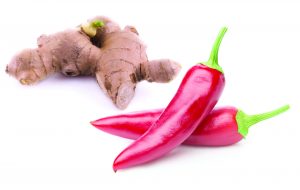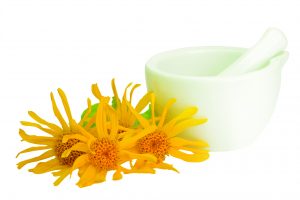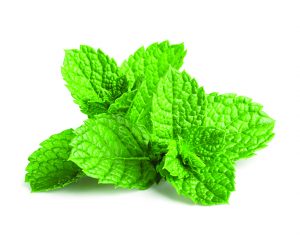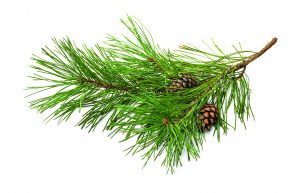Ten plants to grow (or forage) for topical first aid treatments
20 Apr 2021
Mother Nature offers a host of organic remedies to treat cuts, burns, sprains and more
By Sara Bruskin
Many people are trying to be more self-sufficient these days. With product shortages and eroding trust in corporations, some people are taking matters into their own hands during troubling times. Gardening has exploded in popularity and YouTube offers hundreds of tutorials on making natural treatments from plants in your garden and in the wild. These DIY projects foster a sense of accomplishment, and it’s comforting to know exactly what ingredients are in that salve you made and where they came from. Kat Mackinnon, clinic program director at the Colorado School of Clinical Herbalism in Lafayette, walked us through some plants that are great topical treatments for a variety of ailments.
Always consult your doctor before trying any remedy, and test a small amount on your skin to check for adverse reactions before more liberal usage. If a wound is big enough that it may need stitches, do not apply herbal remedies, especially oils.
Siberian Elm (Ulmus pumila)

While aloe is probably the most well-known burn-soothing plant, Siberian elm is a great alternative that happens to be ubiquitous in our area. It’s very invasive so you shouldn’t plant it, but you can take advantage of its healing properties for treating minor burns like sunburn.
Use it for first-degree burns that result in red, irritated skin, but not for severe burns involving blistered or broken skin. Create a cold infusion by putting the bark in water and letting it stand overnight in the refrigerator. Then strain it for use in a poultice. Or apply a blended slurry of leaves and water to the affected area.
Comfrey (Symphytum officinale)

While some people tout the benefits of comfrey taken internally, Mackinnon doesn’t recommend that because it can damage the liver. Stick to external uses for ailments like sprained ankles and pulled muscles. Mackinnon says, “Comfrey is also called ‘knitbone’ because it’s used for healing broken bones. It can be useful for any kind of connective-tissue injury.” Use comfrey leaves in a bath, oil or salve, or put them in a fresh poultice, which is especially helpful for bruises.
Broadleaf Plantain (Plantago major)

Not to be confused with cooking plantains, broadleaf plantain is in a whole different genus. This weedy herb grows well in Colorado’s clay soils, and when used topically, it inhibits histamine production, bringing relief from itchy bug bites, stings and scrapes. It’s also anti-inflammatory. Place fresh leaves in a bath or crush them for use in a poultice.
Ginger & Cayenne

It’s no secret that spicy ingredients warm you up when you consume them, but you can also use them externally for the same purpose. Soaking your feet in warm water infused with fresh ginger and cayenne powder can help raise your body temperature and increase circulation. Put the ingredients in a foot bath, but avoid doing so if you have cuts or cracked skin on your feet.
Arnica (Arnica montana)

Better known for its use in homeopathic remedies, arnica is an effective topical treatment for sprains and strains. It contains a compound called helenalin, which is toxic when taken internally but safe and very effective at fighting external inflammation. Research also suggests topical arnica can combat osteoarthritis pain as efficiently as ibuprofen. Use it as an external salve.
Yarrow (Achillea millefolium)

Yarrow is a well-known styptic (a substance that stops bleeding) and is sometimes referred to as “nosebleed plant” because of its efficacy in staunching nosebleeds and bloody cuts. It’s also astringent and antibacterial, and functions as a mild topical analgesic to help relieve the pain from punctures and lacerations. Apply a fresh poultice to cuts and insert a yarrow-tea-soaked tampon into the nostril for nosebleeds (it may not be glamorous, but neither is a nosebleed).
Mint (Mentha)

Alternating hot and cold therapies helps soothe sore muscles, and mint is a powerhouse of cold therapy. Menthol is the organic compound responsible for mint’s cooling effects, as it chemically triggers skin receptors that sense cold temperatures. While many OTC treatments include menthol, it’s easy and cost-effective to make your own. Apply mint-infused oil or salve to achy muscles.
Pine (Pinus)

More than 125 pine species exist in the world and the resin from any of them has antiseptic and antibacterial properties, making it useful for fighting infections. The Colorado Front Range is exceptionally rich in pine trees, so you’re never far from nature’s first aid kit. In a pinch, apply pine resin directly to cuts and scrapes, but a prepared salve yields the best results.
Calendula (Calendula officinalis)

Often referred to as “pot marigold,” calendula helps skin cells repair themselves by increasing their proliferation. That makes calendula effective against bruises, cuts and scrapes, but don’t put it on cuts exuding pus, Mackinnon warns. “That tissue still needs to drain, and applying calendula can heal the surface tissue over before that process is done.” She recommends applying calendula-infused oils or ointments when wounds have begun to heal and look shiny. Steep fresh flowers in boiling water, strain and apply as a compress to bruises. Apply infused oil to scrapes.
For directions on making and applying these remedies, visit Mackinnon’s website, meetthegreen.com, and click on the resources tab. The Colorado School of Clinical Herbalism offers courses and workshops, and allows prospective students to sit in on a free class. Other local classes are available at Rebecca’s Herbal Apothecary & Supply in Boulder.












